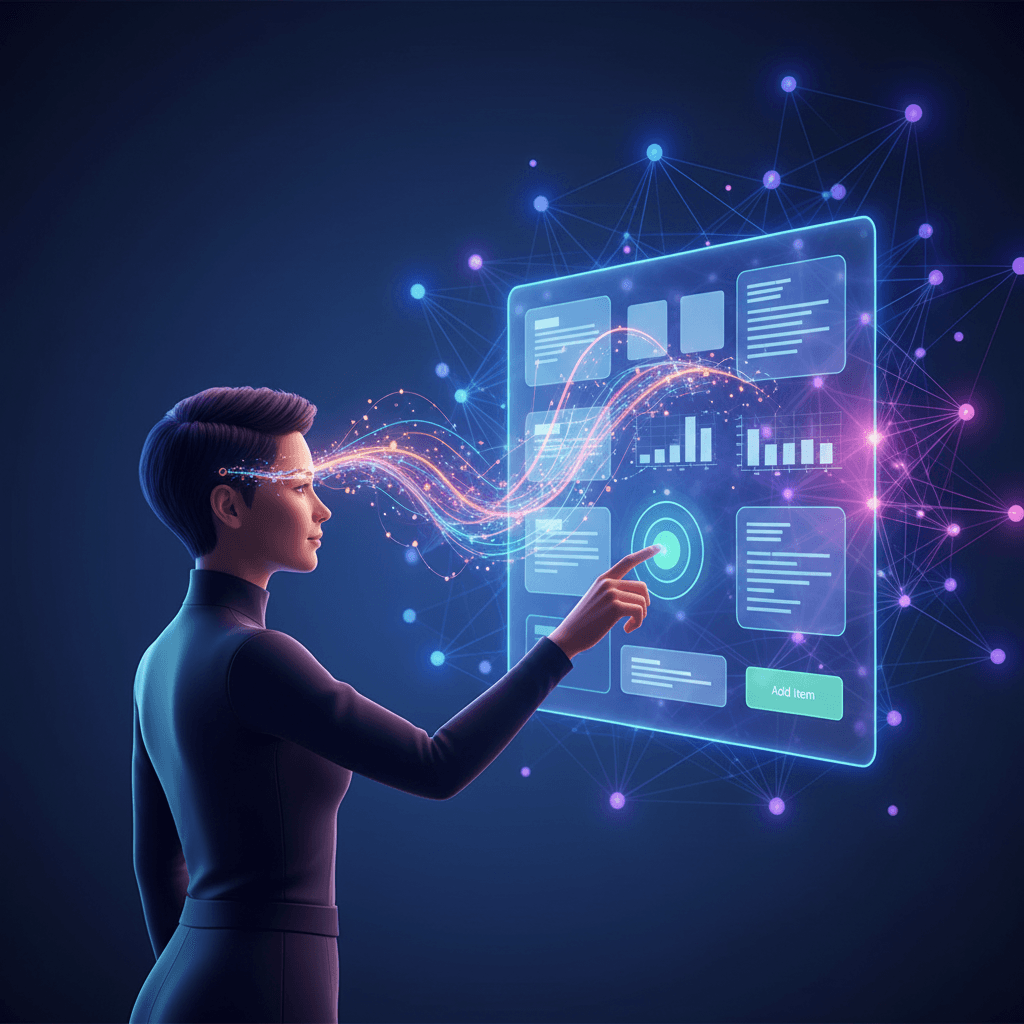Google AI Studio Unveils Vibe Coding, Democratizing App Building with Natural Language
Google's AI Studio, with "vibe coding," democratizes app development, letting creators build with natural language ideas.
October 27, 2025

Google is fundamentally reshaping the landscape of AI application development with the introduction of "v.i.b.e. coding" in its AI Studio, a move designed to drastically lower the barrier to entry for creators and accelerate prototyping for seasoned developers.[1][2] This new methodology, powered by the advanced multimodal capabilities of the Gemini family of models, allows users to generate functional, feature-rich applications by describing their ideas in natural language.[3][1][4] The shift moves the focus from writing line-by-line code to a more intuitive, conversational process of guiding an AI to build, refine, and deploy applications, effectively democratizing AI development.[5] This development signals a significant industry trend towards AI-assisted workflows, where the primary role of the human creator is to provide the vision and direction, while the AI handles the complex technical implementation.
The term "vibe coding," coined by AI researcher Andrej Karpathy in early 2025, describes an emerging software development practice that uses artificial intelligence to translate high-level, descriptive prompts into executable code.[6][5][7][8][9] Instead of focusing on the intricate syntax and logic of a programming language, a developer or creator can simply articulate the "vibe" or the desired outcome of their application.[5] Google's AI Studio now embodies this principle, enabling a user to describe a complex, multi-modal app, and the platform, leveraging the latest Gemini models, automatically identifies and integrates the necessary APIs and services to bring the idea to life.[1][2] This process abstracts away the need to manage SDKs or backend connections, allowing for a seamless transition from concept to a working app within minutes.[1] The approach is designed to cater to a wide spectrum of users, from experienced developers seeking rapid prototyping to beginners with no coding experience at all.[5]
Central to this new experience is a redesigned AI Studio that prioritizes inspiration and intuitive interaction. Google has transformed the former App Gallery into a visually rich library where users can explore existing projects, learn from their starter code, and "remix" them into new creations.[1][2] To further spark creativity, the platform incorporates novel features like an "I'm Feeling Lucky" button to generate project ideas and a "Brainstorming Loading Screen" that uses Gemini to display context-aware suggestions while an app is being built.[1][2] Perhaps the most significant new tool is the "Annotation Mode," which allows users to modify their app visually. Instead of editing code, a user can highlight a component of the app's interface and provide natural language instructions like "make this button blue" or "animate this image," creating a more direct and fluid feedback loop between the creator and the AI.[2]
The implications of Google's embrace of vibe coding extend far beyond a single product update. It represents a broader philosophical shift in how software is created, positioning AI as a collaborative partner rather than just a tool. This paradigm shift, mirrored in Google's other developer-focused platforms like Firebase Studio (formerly Project IDX), aims to create an integrated, browser-based ecosystem where building, testing, and deploying full-stack AI-powered applications is streamlined and accessible.[10][11] While the "pure" form of vibe coding, where a developer might not even review the generated code, is often suited for quick experiments, the professional application involves a human-in-the-loop approach.[5][8] The developer's role evolves into that of a prompter, guide, and tester, responsible for reviewing, refining, and ultimately taking ownership of the AI-generated output.[5] However, critics caution that this approach comes with challenges, including potential issues with code quality, performance, and the difficulty of debugging AI-generated code that may lack a clear architectural structure.[7][8]
In conclusion, Google's integration of vibe coding into its Gemini-powered AI Studio marks a pivotal moment in the evolution of software development. By prioritizing natural language interaction and automating complex integrations, Google is not only accelerating the development lifecycle but also empowering a new generation of creators to build with AI.[3][1] The platform's new features are designed to foster a continuous creative flow, from ideation and inspiration to iterative refinement and deployment. While the long-term impact and potential pitfalls of relying heavily on AI for code generation are still being explored, this move firmly establishes vibe coding as a significant and lasting trend. It signals a future where the ability to clearly articulate an idea becomes as valuable as the ability to write complex code, fundamentally changing who can build and what is possible to create.
Sources
[2]
[3]
[4]
[5]
[7]
[10]
[11]